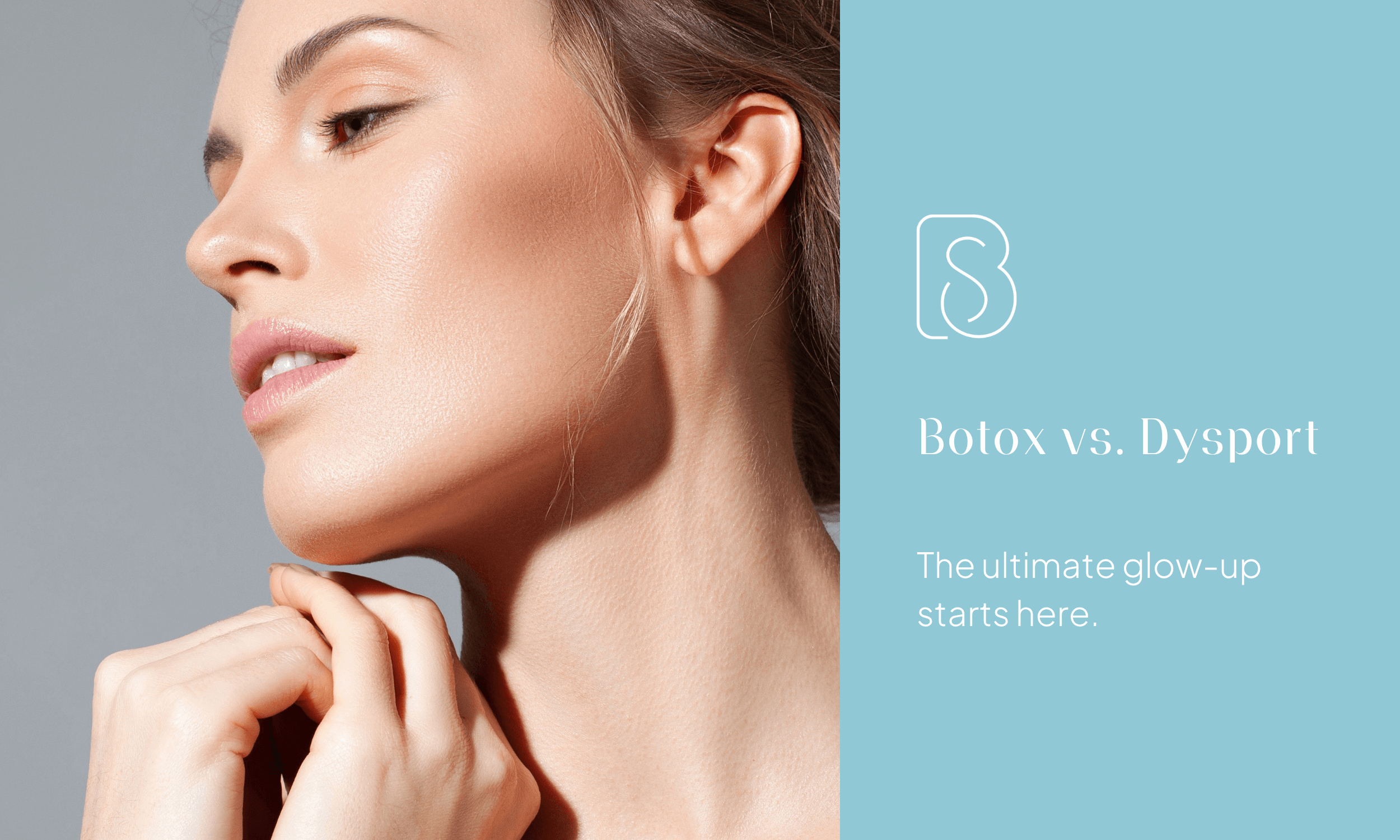Botox vs Dysport: Which is Right For You?
Smooth, youthful skin is something many of us want, and today’s cosmetic treatments make it easier than ever to achieve. If you’ve been researching ways to soften fine lines and wrinkles, you’ve likely come across the debate of Botox vs Dysport. At Blue Sky Laser & Tox in Arlington, VA, clients often ask which option is best for their needs, lifestyle, and results.
The truth is, both treatments are FDA-approved neurotoxins that relax facial muscles and reduce the appearance of wrinkles, but they aren’t identical. Understanding their differences can help you choose the right injectable for your goals. Let’s take a closer look.
What Are Neurotoxins and How Do They Work?
Neurotoxins like Botox® and Dysport® temporarily block signals between nerves and muscles. When targeted muscles relax, the skin above them smooths out, reducing wrinkles caused by repeated expressions like frowning, squinting, or smiling. The result is a refreshed appearance that looks natural when performed by skilled injectors.
Think of neurotoxins as hitting “pause” on the muscle activity that deepens lines over time. They don’t freeze your face but instead give your skin a chance to rest and look smoother.
Botox vs Dysport: What’s the Difference?
Botox and Dysport serve the same purpose but differ in their formulation, where they work best, how quickly results appear, how long those results last, and the cost.
Formulation
Botox is the original wrinkle-smoothing injectable, introduced in the late 1980s. It contains onabotulinumtoxinA and has decades of studies backing its safety and effectiveness. Dysport, which contains abobotulinumtoxinA, has been widely used in Europe since the early 1990s and was approved in the U.S. in 2009.
The main distinction lies in their protein structures and how the formulas spread once injected. Dysport molecules are slightly smaller, which allows the product to diffuse more easily in larger areas. This difference can influence which injectable works best depending on the treatment area.
Treatment Areas
Both Botox and Dysport are FDA-approved for treating frown lines between the brows, and injectors commonly use both for forehead lines, crow’s feet, and other cosmetic concerns. Botox, however, also has a long history of therapeutic applications, such as managing chronic migraines, TMJ, and excessive sweating.
Dysport’s tendency to spread a little more under the skin makes it especially effective for larger areas, such as the forehead. Botox, meanwhile, allows for very precise targeting, making it ideal for smaller, more defined treatment areas.
Onset of Results
Timing can be a deciding factor if you’re preparing for an event. Botox typically takes 5 to 7 days to show noticeable changes, with full results appearing at the two-week mark. Dysport often works faster for many patients, with visible improvements in just 2 to 4 days.
If you’re looking for quicker results before a big occasion, Dysport may give you the head start you need.
Length of Results
Both injectables last, on average, about 3 to 4 months. Longevity varies depending on metabolism, muscle activity, and lifestyle. Some patients notice that Dysport’s effects set in faster but may wear off slightly sooner than Botox. Others find little difference in duration.
A consultation with your injector at Blue Sky Laser & Tox can help determine which product aligns with your lifestyle and how often you’d like to schedule maintenance visits.
Cost
Both Botox and Dysport are priced by the unit, and the number of units you’ll need depends on your treatment goals and areas being addressed. Dysport units are typically less expensive than Botox, but because Dysport units are smaller, patients often require more units to achieve similar results.
In the end, overall cost balances out, and your injector will recommend the right dosing plan for your desired look.
Do Neurotoxin Injections Hurt?
Most people are pleasantly surprised at how quick and comfortable treatments are. Neurotoxin injections like Botox and Dysport use very fine needles, and the sensation is often described as a tiny pinch. Treatments usually take less than 15 minutes, and you can return to your day immediately.
At Blue Sky Laser & Tox, numbing cream or ice is available for added comfort, though many patients don’t feel they need it.
Do Botox and Dysport Have Side Effects?
Both injectables are considered safe when administered by trained professionals. Common side effects include mild redness, swelling, or slight bruising at the injection site, which typically resolve in a few days. Rare effects, such as temporary eyelid drooping, are greatly minimized when you choose an experienced injector who understands facial anatomy.
At Blue Sky Laser & Tox, safety and natural results are always the top priorities, so you can feel confident in your treatment.
Botox vs Dysport: Which One Is Right for You?
So, when it comes to Botox vs Dysport, which should you choose? The answer depends on your goals, budget, and timeline. If you’re looking for precise treatment in smaller areas or you’re interested in therapeutic uses, Botox may be the better fit. If you want quicker results or are treating larger facial zones, Dysport might be your go-to option.
The good news is that both deliver smoother, refreshed skin, and in the hands of skilled injectors, either choice can give you a natural, youthful glow.
Botox, Dysport, and More Aesthetic Treatments in Arlington, VA
At Blue Sky Laser & Tox, we’re proud to offer both Botox and Dysport, along with a wide range of other treatments to help you look and feel your best. Whether you’re hoping to soften lines, restore volume, or refresh your skin’s overall appearance, our team will guide you to the right treatment plan tailored to your goals.
Ready to make your decision? Contact us today to schedule your consultation and discover whether Botox or Dysport is the perfect choice for your skin.



